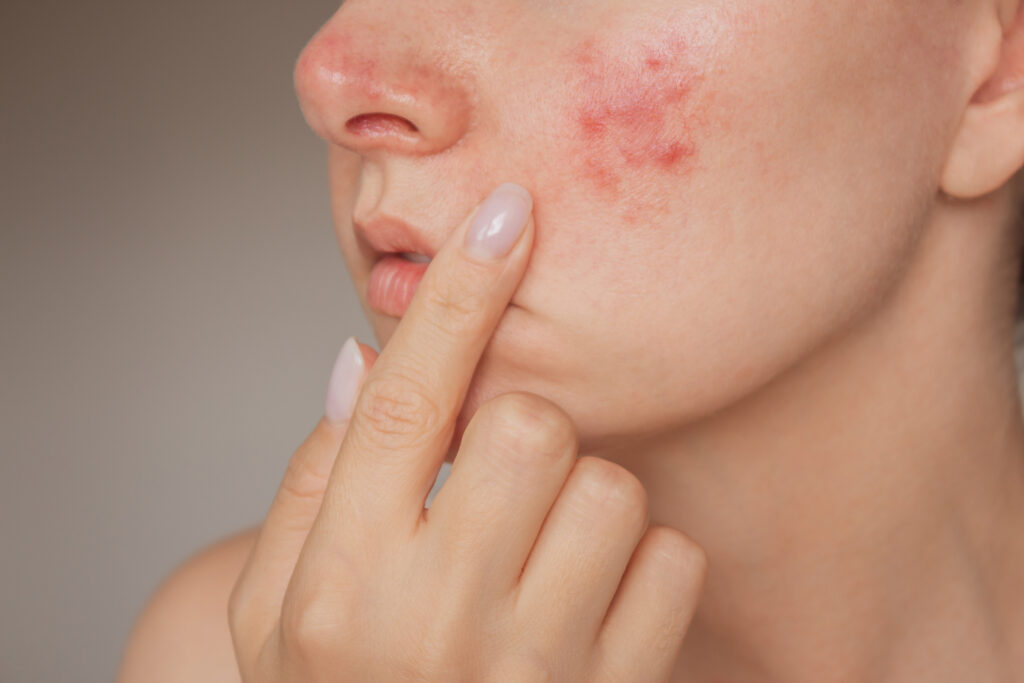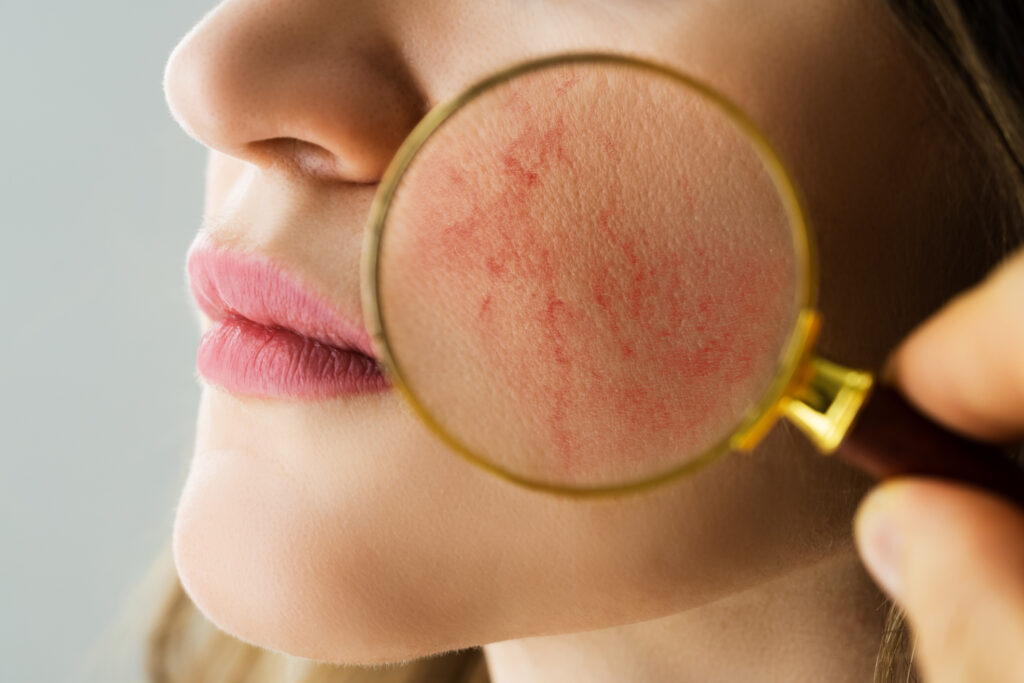Different Types of Rosacea and How Can They Be Treated?
Rosacea is a common but often misunderstood skin condition that affects millions of people worldwide. It typically appears on the face and can cause persistent redness, visible blood vessels, and, in some cases, acne-like breakouts. The symptoms of rosacea can vary significantly from person to person, making diagnosis and treatment a highly individualised process.
Understanding the different types of rosacea is essential for finding the right treatment approach. In this blog, we’ll break down the main subtypes of rosacea, explain their symptoms, and discuss how they can be effectively treated.
What is Rosacea?
Rosacea is a chronic inflammatory skin condition most found in adults over the age of 30. It tends to affect the central areas of the face—particularly the cheeks, nose, forehead, and chin.
While the exact cause is still not fully understood, rosacea is believed to be linked to a combination of genetic, environmental, and vascular factors. Flare-ups can be triggered by a wide range of factors, including:
- Sun exposure
- Stress
- Hot drinks and spicy foods
- Alcohol
- Extreme weather conditions
- Skincare products
Rosacea tends to follow a cycle of flare-ups and remissions, which means that symptoms can come and go over time.

The Four Main Types of Rosacea
There are four primary subtypes of rosacea, each with its own set of distinguishing features. Some individuals may experience more than one type at the same time.
1. Erythematotelangiectatic Rosacea (ETR)
Key Symptoms:
- Persistent facial redness
- Flushing and blushing
- Visible blood vessels (telangiectasia)
- Sensitive or reactive skin
ETR is the most common form of rosacea and often the earliest sign of the condition. It can sometimes be mistaken for sensitive skin or sunburn.
2. Papulopustular Rosacea
Key Symptoms:
- Red, swollen bumps and pustules
- Facial redness
- Burning or stinging sensations
- May resemble acne, but lacks blackheads
Often referred to as “acne rosacea,” this subtype is more inflammatory in nature and commonly affects middle-aged women.
3. Phymatous Rosacea
Key Symptoms:
- Thickened, rough, or bumpy skin texture
- Enlarged pores
- Most commonly affects the nose (rhinophyma)
This rarer form of rosacea tends to develop gradually and is more common in men. If left untreated, it can lead to significant skin thickening and distortion, especially around the nose.
4. Ocular Rosacea
Key Symptoms:
- Bloodshot or watery eyes
- Burning or gritty sensation
- Swollen eyelids
- Light sensitivity
Ocular rosacea can occur alongside skin symptoms or as an isolated condition. It often goes unrecognised but should be taken seriously as it can impact eye health.

How Can Rosacea Be Treated?
Although there is currently no cure for rosacea, a variety of treatments can help control and reduce symptoms. Treatment plans often vary depending on the subtype and severity of the condition.
Laser and Light-Based Treatments
For persistent redness and visible blood vessels, laser therapy or intense pulsed light (IPL) can be highly effective. These treatments work by targeting broken blood vessels under the skin and promoting a more even skin tone.
Lifestyle and Skincare Adjustments
Identifying and avoiding personal rosacea triggers is key to long-term management. Patients are also advised to:
- Use a gentle, fragrance-free skincare routine
- Apply high SPF sunscreen daily
- Avoid known triggers like alcohol, spicy food, and extreme temperatures
Treating Ocular Rosacea
Treatment may include:
- Lubricating eye drops
- Warm compresses
- Eyelid hygiene routines
- Oral antibiotics if necessary
For those with ocular symptoms, it’s important to consult both a dermatologist and an eye specialist.
When Should You See a Dermatologist?
You should consider seeing a dermatologist if:
- Your redness is persistent or worsening
- Over-the-counter treatments are ineffective
- You’re experiencing acne-like breakouts that aren’t clearing
- You notice thickening of the skin or changes in skin texture
- Your eyes feel irritated or painful
A dermatologist can assess your skin, identify the type of rosacea, and tailor a treatment plan that works for you.
Rosacea is a complex condition with a range of symptoms and triggers. While it can be frustrating, understanding the type of rosacea you have is the first step toward managing it effectively. With the right combination of medical treatment, skincare, and lifestyle changes, most people with rosacea can see a significant improvement in their symptoms.
Get Help With Rosacea at The Devonshire Clinic
If you think you may have rosacea, don’t hesitate to seek professional advice. Early intervention can help prevent the condition from progressing and greatly improve your quality of life. The Devonshire Clinic, located in London’s world-renowned Harley Street medical district, specialises in a wide range of skin conditions, including rosacea. If you’re experiencing persistent skin issues and need clarity on the cause or appropriate treatment, consult one of our expert dermatologists for clear, straightforward guidance. Our specialists provide professional advice to achieve healthy, radiant skin. Contact The Devonshire Clinic today to schedule an appointment and receive the expert care you deserve.